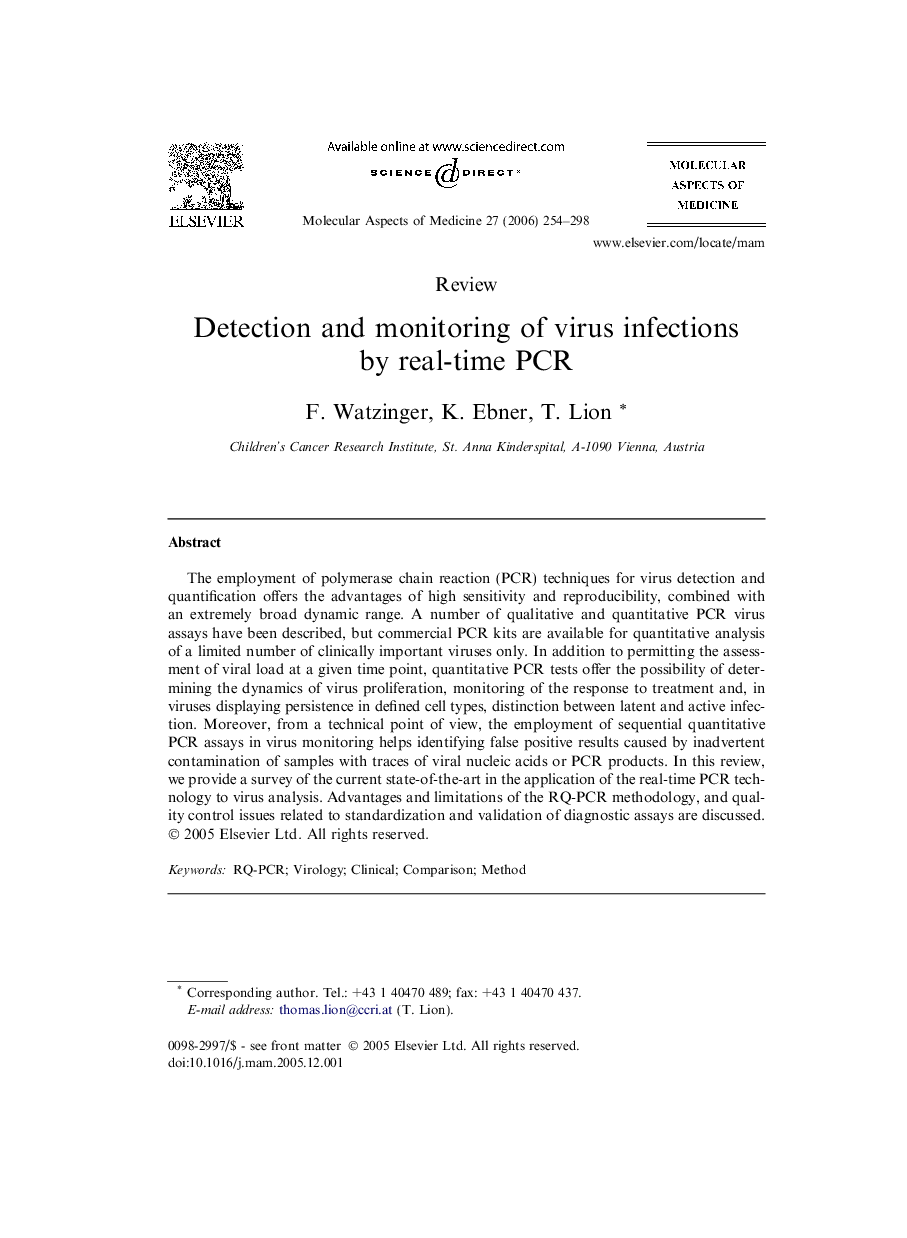| Article ID | Journal | Published Year | Pages | File Type |
|---|---|---|---|---|
| 1995982 | Molecular Aspects of Medicine | 2006 | 45 Pages |
The employment of polymerase chain reaction (PCR) techniques for virus detection and quantification offers the advantages of high sensitivity and reproducibility, combined with an extremely broad dynamic range. A number of qualitative and quantitative PCR virus assays have been described, but commercial PCR kits are available for quantitative analysis of a limited number of clinically important viruses only. In addition to permitting the assessment of viral load at a given time point, quantitative PCR tests offer the possibility of determining the dynamics of virus proliferation, monitoring of the response to treatment and, in viruses displaying persistence in defined cell types, distinction between latent and active infection. Moreover, from a technical point of view, the employment of sequential quantitative PCR assays in virus monitoring helps identifying false positive results caused by inadvertent contamination of samples with traces of viral nucleic acids or PCR products. In this review, we provide a survey of the current state-of-the-art in the application of the real-time PCR technology to virus analysis. Advantages and limitations of the RQ-PCR methodology, and quality control issues related to standardization and validation of diagnostic assays are discussed.
